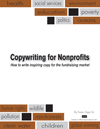I read an article in Business Week by Steve McKee that I believe applies not only to the for-profit sector, but also to the nonprofit business world: “Don’t Undermine Your Brand”
He begins by citing examples of companies whose marketing doesn’t quite reflect reality. McKee stresses that customers value authenticity. And that marketing should reflect what the company can deliver.
Furthermore, today more than ever before any false claims will soon be exposed.
“With the headline-making mischief of companies such as Enron, Madoff Investments, … and the like, consumers won’t tolerate disingenuousness. And the advent of social media has given them more power than ever to expose pretenders.
Celebrities may appear beautiful on Entertainment Tonight, but when they say ugly things on answering machines, the world soon finds out. Athletes who are heroes on the field but scoundrels in real life can get away with living double lives for only so long. Companies that lay claim to something they’re not can be called on it with increasing speed and fervor.”
Although there are also far too many scandals within the nonprofit sector . . . the first point I want to stress isn’t about fraud or any dishonesty.
It’s about how you think when you sit down to write an email, a page of web copy, or a direct mail letter.
Are you thinking: “What can I say to raise the most money?”
To me this isn’t being true to your nonprofit brand. It’s not a reflection of what you really want to do: Help people through your mission work. This “false” thinking comes through in your writing whether you realize it or not. And it hurts response.
Instead, next time you sit down to write a message to donors, tell it like it is! Find the story that demonstrates what your charity does very well. Share a compelling story of how someone’s life is better thanks to the donors.
That’s your brand in action. That’s truth. It’s relevant to donors and shows how they make a difference. It also inspires response . . . donations.
The second point I want to make ties to the ending of McKee’s article: Be authentic.
As McKee says, being true to your brand requires:
– Honesty (don’t exaggerate what you accomplish)
– Credibility (don’t promise what you can’t deliver)
– Consistency (be honest and credible 24/7; have depth to your nonprofit character)
He goes on to say, “The good news is that money doesn’t matter. In fact, being authentic will actually make your limited budget go farther because you’re not trying to convince people of anything that isn’t true. I recently drove past a bail bonding company in a ramshackle building with a beat-up sign that said: ‘Because jail sucks.’ Now that’s authentic.”
Taking the bail bond example, here are ideas on what charities could say:
Because poverty sucks
Because poverty is pure misery
Because pollution stinks
Tell it like it is. The point is, don’t sugar-coat the problem you’re trying to solve. Be authentic.
Donors respond very well to authentic messages. A clear message that can’t possibly be misunderstood. Clarity trumps persuasion. Clarity trumps political correctness.
Yes, donors respond to authentic stories and expressions of the true problem. They respond when your way of thinking is focused on how donors can help, and not on how much money they can give.
Be true to what you do. Tell it like it is.

{ 1 trackback }
{ 0 comments… add one now }